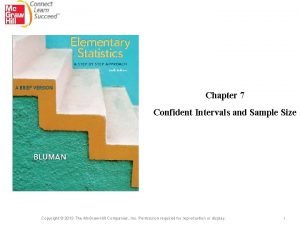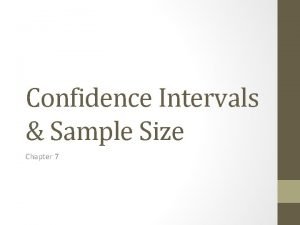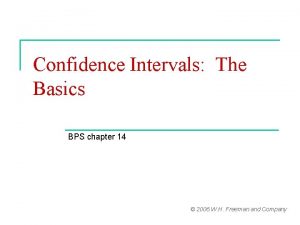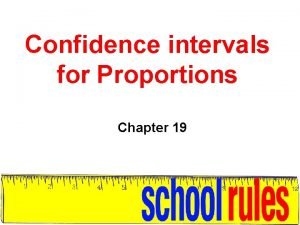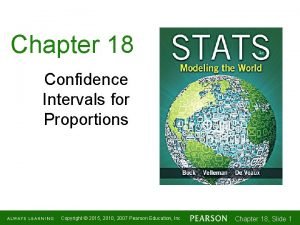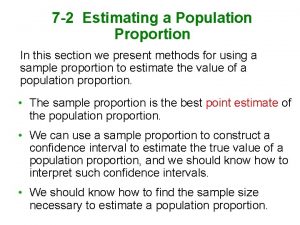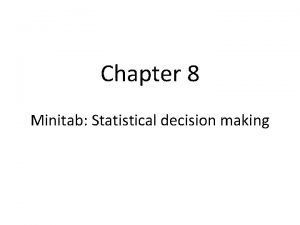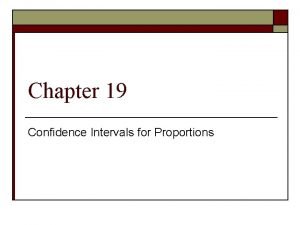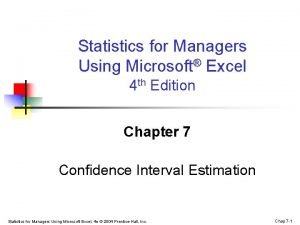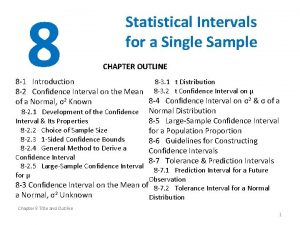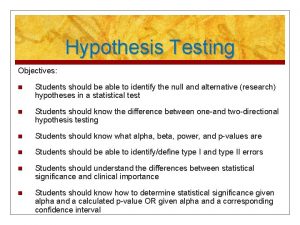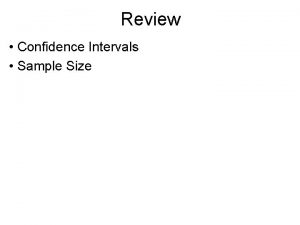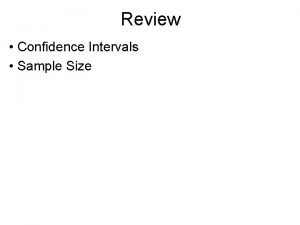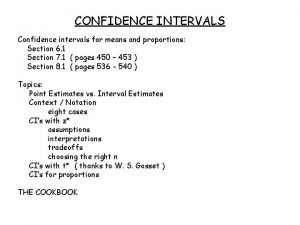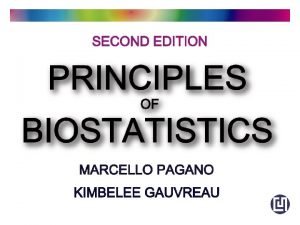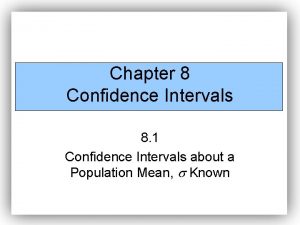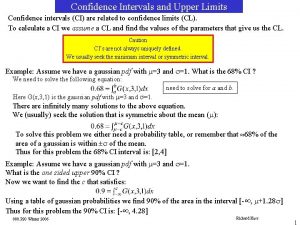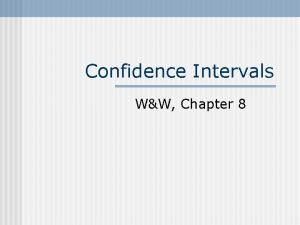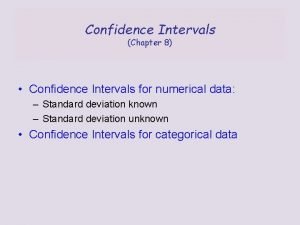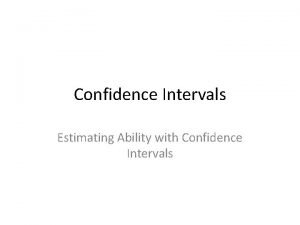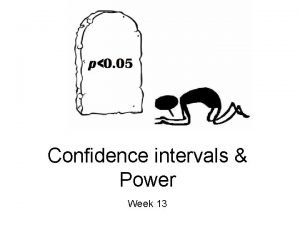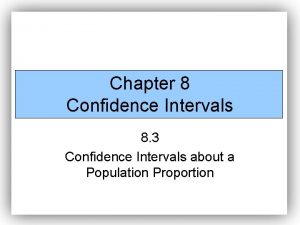Review Confidence Intervals Sample Size Confidence Intervals The















- Slides: 15

Review • Confidence Intervals • Sample Size

Confidence Intervals The Confidence Interval is expressed as: E is called the margin of error. For samples of size > 30,

Sample Size The sample size needed to estimate m so as to be (1 -a)*100 % confident that the sample mean does not differ from m more than E is: …round up

Small Samples What happens if n is small (n < 30)? Our formulas from the last section no longer apply.

Small Samples What happens if n is small (n < 30)? Our formulas from the last section no longer apply. There are two main issues that arise for small samples: 1) s no longer can be approximated by s 2) The CLT no longer holds. That is the distribution of the sampling means is not necessarily normal.

t- distribution If we have a small sample (n < 30) and wish to construct a confidence interval for the mean we can use a t-statistic, provided the sample is drawn from a normally distributed population.

t-distributions s is unknown so we use s (the sample standard deviation) as a point estimate of s. We convert the nonstandard t-distributed problem to a standard t-distributed problem through the use of the standard t-score

t-distributions • Mean 0 • Symmetric and bell-shaped • Shape depends upon the degrees of freedom, which is one less than the sample size. df = n-1 • Lower in center, higher tails than normal. • See Table inside front cover in text

Example In n=15 and after some calculation a/2=0. 025, we use the table and n -1 = 14 degrees of freedom to deduce t 0. 025 = 2. 145

Confidence Interval for the mean when s is unknown and n is small The (1 - a)*100% confidence interval for the population mean m is The margin of error E, is in this case N. B. The sample is assumed to be drawn from a normal population.

Confidence Intervals for a small sample population mean The Confidence Interval is expressed as: The degrees of freedom is n-1.

Example The following are the heat producing capabilities of coal from a particular mine (in millions of calories per ton) 8, 500 8, 330 8, 480 7, 960 8, 030 Construct a 99% confidence interval for the true mean heat capacity. Solution: sample mean is 8260. 0 sample Std. Dev. is 251. 9 degrees of freedom = 4 a = 0. 01 7741. 4 m 8778. 6

Confidence intervals for a population proportion The objective of many surveys is to determine the proportion, p, of the population that possess a particular attribute. . Example: Determine the fraction of Canadians who support gun control. If the size of the population is N, and X people have this attribute, then as we already know, is the population proportion.

Confidence intervals for a population proportion If the size of the population is N, and X people have this attribute, then as we already know, is the population proportion. The idea here is to take a sample of size n, and count how many items in the sample have this attribute, call it x. Calculate the sample proportion, . We would like to use the sample proportion as an estimate for the population proportion.

The confidence interval for the population proportion is :
 Chapter 7 confidence intervals and sample size
Chapter 7 confidence intervals and sample size Is ap stat hard
Is ap stat hard How to find sample size of confidence interval
How to find sample size of confidence interval Significance and confidence level
Significance and confidence level Confidence interval vs confidence level
Confidence interval vs confidence level Reporting confidence intervals
Reporting confidence intervals Chapter 19 confidence intervals for proportions
Chapter 19 confidence intervals for proportions 90 confidence interval excel
90 confidence interval excel Chapter 18 confidence intervals for proportions
Chapter 18 confidence intervals for proportions Preparing to estimate a population proportion
Preparing to estimate a population proportion 95 confidence interval ti 84
95 confidence interval ti 84 Confidence interval in minitab
Confidence interval in minitab Chapter 19 confidence intervals for proportions
Chapter 19 confidence intervals for proportions How to add 95 confidence intervals in excel
How to add 95 confidence intervals in excel Statistical intervals based on a single sample
Statistical intervals based on a single sample Confidence interval vs confidence level
Confidence interval vs confidence level
